

The Advanced Mode option lets you customize the recovery process.
Follow these steps:
The BMR utility starts locating the machine that is going to be recovered and displays the corresponding disk partition information.
The upper pane shows the disk configuration that you have on the current (target) machine and the lower pane shows the disk partition information that you had on the original (source) machine.
Important! A red X icon displaying for a source volume in the lower pane indicates that this volume contains system information and has not been assigned (mapped) to the target volume. This system information volume from the source disk must be assigned to the target disk and restored during BMR or the reboot fails.
You can create volumes to a smaller disk based on the suggested Minimum disk space required. In the example, the original size of the volume is 81568 MB. When you create the volume on the target disk, the suggested minimum size is 22752 MB. In this case, you can create the original volume with a size of 22752 MB.

Note: If you perform BMR and you restore the system volume to a disk which is not configured as the boot disk, it will fail to boot the machine after BMR is completed. Ensure that you are restoring the system volume to a properly configured boot disk.
Note: When restoring to another disk/volume, the capacity of new disk/volume can be the same size, larger than original disk/volume, or smaller than the original disk/volume. In addition, volume resizing is not for dynamic disks.
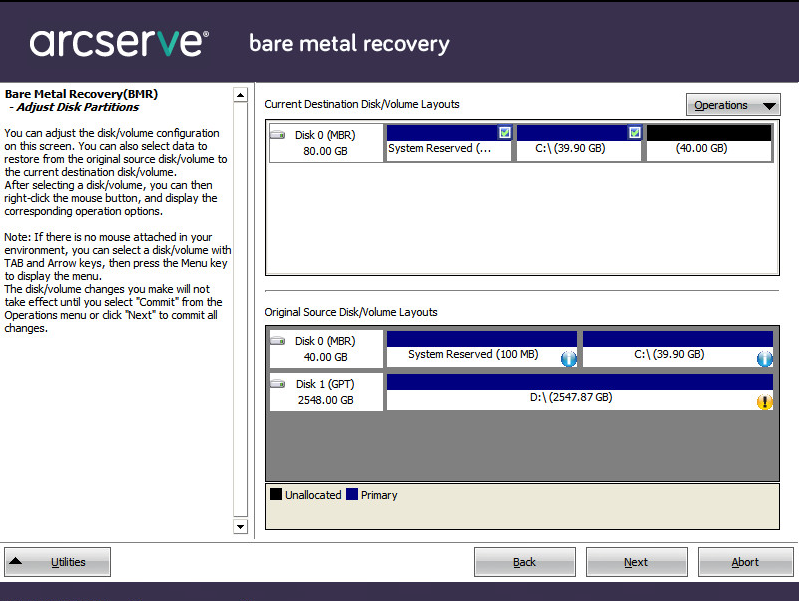
The Select a Basic Source Volume dialog opens.
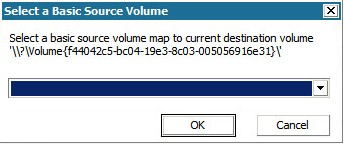
The Submit Disk Changes screen opens, displaying a summary of the selected operations. For each new volume being created, the corresponding information is displayed.
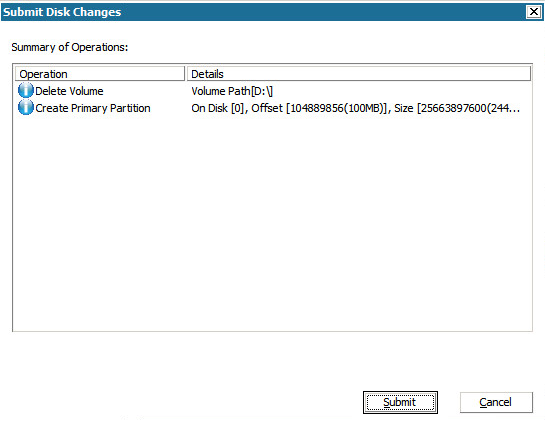
Note: All operations to the hard drive do not take effect until you submit it.
On the target machine, the new volumes are created and mapped to the corresponding source machine.
The Summary of Disk Restore Settings screen opens, displaying a summary of the volumes that are going to be restored.
Note: On the bottom of restore summary window, the drive letters listed in "Destination Volume" column are automatically generated from the Windows Preinstallation Environment (WinPE). They can be different from the drive letters listed in "Source Volume" column. However, the data is still restored to proper volume even if drive letters are different.
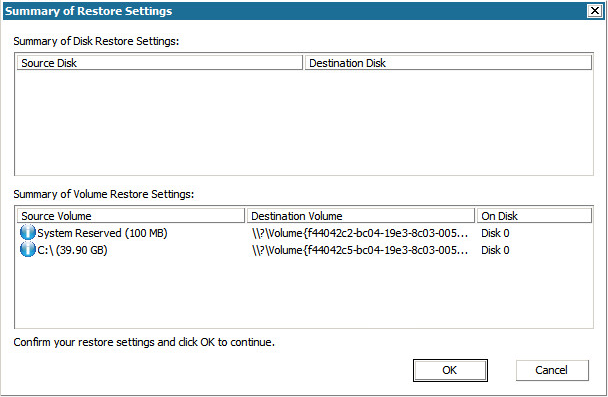
The restore process starts. The BMR wizard screen displays the restore status for each volume.
Important: If you are performing an authoritative restore of an active directory after a BMR, you must uncheck the option Automatically reboot your system after recovery and for more information, see How to Perform an Authoritative Restore of an Active Directory after a BMR.
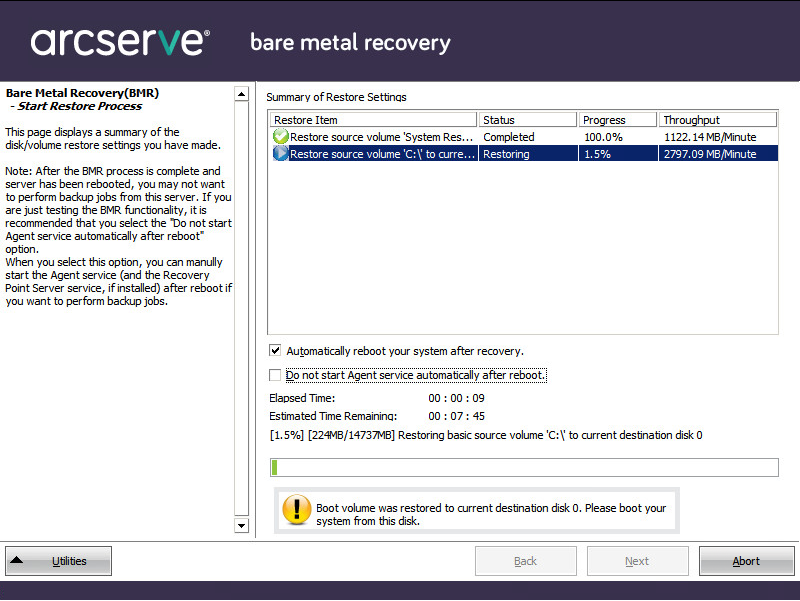
By default, the Activity Log is saved to the following location:
X:\windows\system32\dr\log.
Note: To avoid getting a Windows-generated error, do not save the Activity Log on your desktop or create a folder on your desktop using the Save As option from the BMR Activity Log window.
You can browse and select drivers to inject to the recovered system so that even if you are recovering to a machine with dissimilar hardware, you can still bring back the machine after BMR.
|
Copyright © 2015 |
|